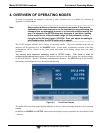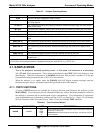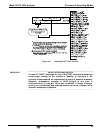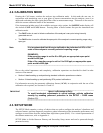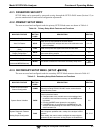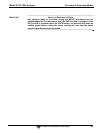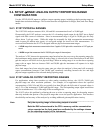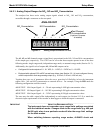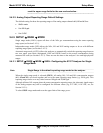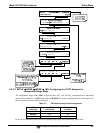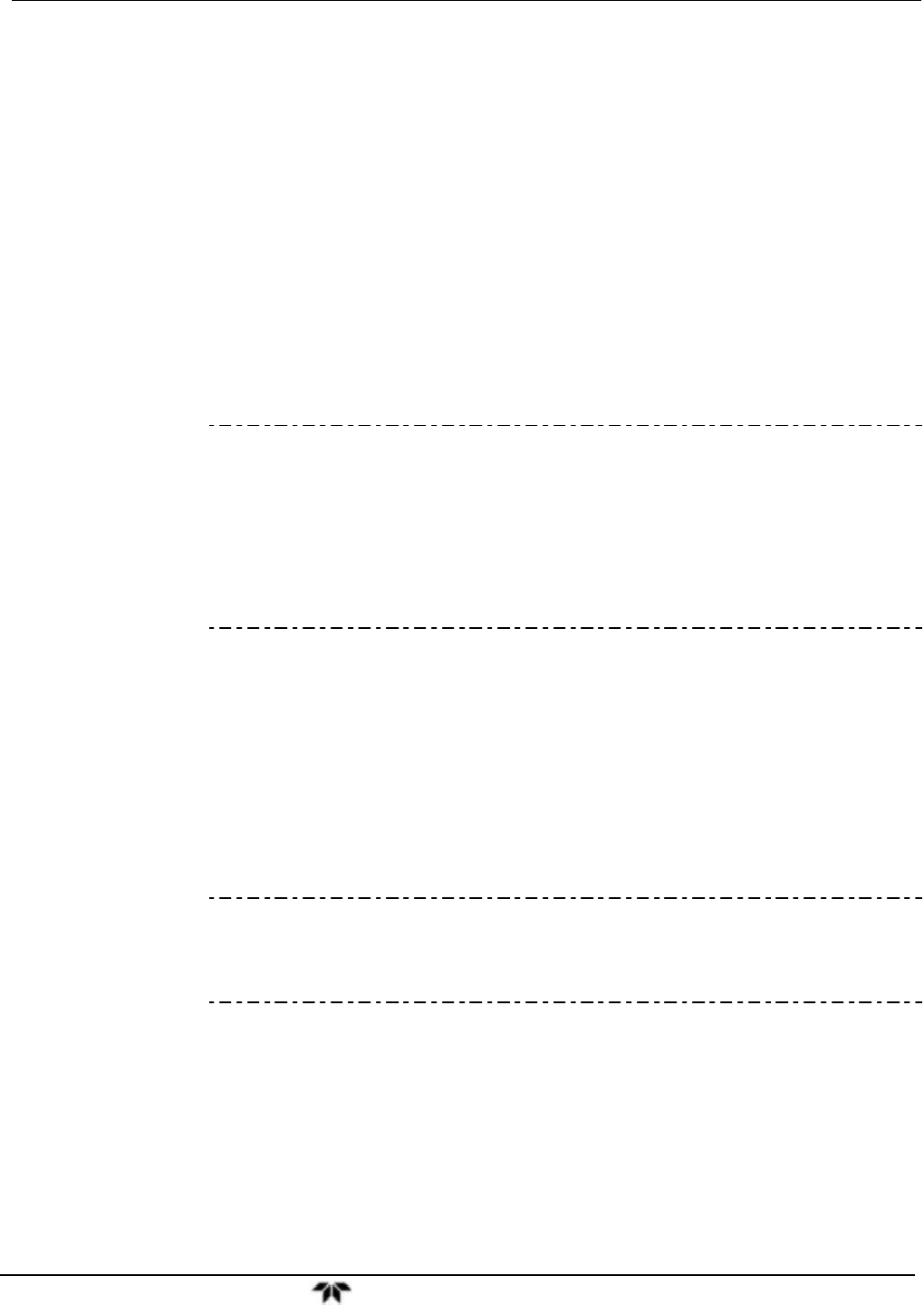
Model 9110T NOx Analyzer Overview of Operating Modes
Teledyne Analytical Instruments 92
4.2. CALIBRATION MODE
Pressing the CAL button, switches the analyzer into calibration mode. In this mode the user can, in
conjunction with introducing zero or span gases of known concentrations into the analyzer, cause it to
adjust and recalculate the slope (gain) and offset of the its measurement range. This mode is also used to
check the current calibration status of the instrument.
If the instrument includes one of the available zero/span valve options, the SAMPLE mode display will
also include CALZ and CALS buttons. Pressing either of these buttons also puts the instrument into
calibration mode.
The CALZ button is used to initiate a calibration of the analyzer’s zero point using internally
generated zero air.
The CALS button is used to calibrate the span point of the analyzer’s current reporting range using
span gas.
Note It is recommended that this span calibration be performed at 80% of full
scale of the analyzer’s currently selected reporting range.
EXAMPLES:
If the reporting range is set for 0 to 500 ppb, an appropriate span point
would be 400 ppb.
If the of the reporting range is set for 0 to 1000 ppb, an appropriate span
point would be 800 ppb.
Due to the critical importance and complexity, calibration operations are described in detail in other
sections of the manual:
Section 9 details setting up and performing standard calibration operations or checks.
Section 10 details setting up and performing EPA protocol calibrations.
For information on using the automatic calibrations feature (ACAL) in conjunction with the one of the
calibration valve options, see Sections 9.4.3 and 9.5.
IMPORTANT
IMPACT ON READINGS OR DATA
To avoid inadvertent adjustments to critical settings, activate calibration
security by enabling password protection in the SETUP – PASS menu
(Section 5.5).
4.3. SETUP MODE
The SETUP Mode contains a variety of choices that are used to configure the analyzer’s hardware and
software features, perform diagnostic procedures, gather information on the instruments performance and
configure or access data from the internal data acquisition system (DAS). For a visual representation of
the software menu trees, refer to Appendix A.
SETUP Mode is divided between Primary and Secondary Setup menus and can be protected through
password security.






